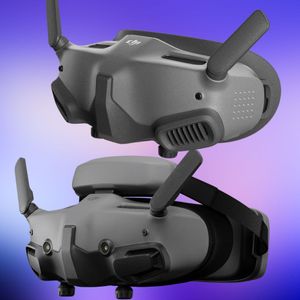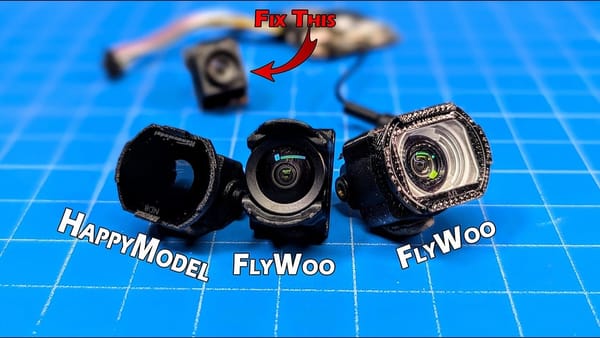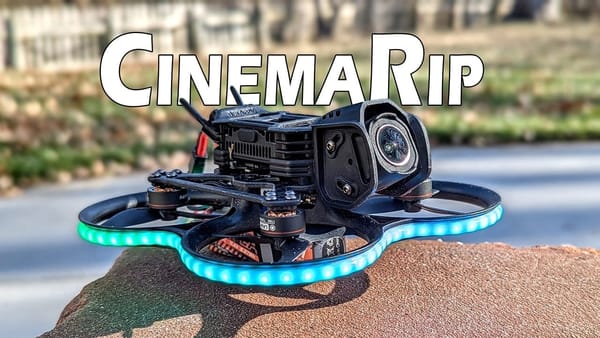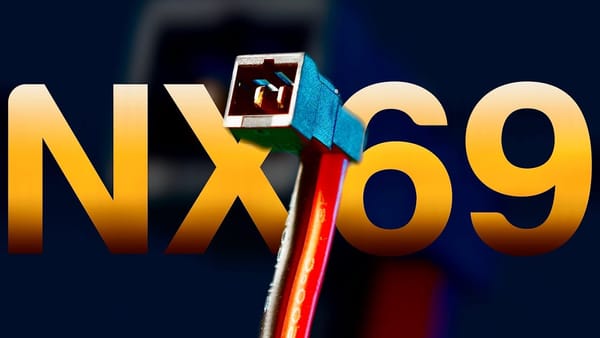Based on multiple YouTube reviews (linked below), this article synthesizes the key insights to save you time and provide a thorough understanding of the Caddx GoFilm20 Cinewhoop.
The GoFilm20 stands as a robust competitor to the DJI O3 Air Unit, particularly noted for being the first commercially available cinewhoop integrated with the Walksnail Moonlight camera. Let’s explore what makes this drone unique, its advantages, and some of its drawbacks.
The Good
Compact and Lightweight Design: The Caddx GoFilm20 is notably lightweight at around 121 grams. Its design allows it to maintain a total weight under 250 grams with a 4S 650mAh battery, making it compliant with many drone regulations while still offering robust features.
Advanced Camera Capabilities: At its core, the GoFilm20 features the Walksnail Moonlight camera that supports 4K 60fps recording. The inclusion of an ND filter and an anti-vibration camera mount helps to reduce shaky footage, enhancing the quality of the video captured, which is especially valuable in variable lighting conditions.


User-Friendly Build: This cinewhoop is built with accessibility in mind. Key components like the microcontroller, gyroscope, and electronic speed controller are easy to access for updates and repairs, reflecting a design that values user experience.
Flight Performance: The drone is agile and responsive, making it a joy to fly. It handles well, maintaining stable flight even in close proximity to obstacles. With tri-blade propellers and 1303 6000KV motors, it offers safety and efficiency, albeit with some propwash which can be minimized with tuning with future firmware updates down the line.
The Bad
Outdated USB Connector: The use of a micro USB connector instead of the more modern USB-C is a minor but notable downside, as USB-C offers better durability and ease of use.
Battery Placement and Vibration Issues: The placement of the battery can cause vibrations if not properly secured away from certain parts of the drone. This design oversight can lead to degraded flight footage quality, which is a crucial aspect for a drone designed for video capture.
Flight Time Limitations: While not a severe issue, the flight time of 4 to 6 minutes may be limited for some users. This factor depends heavily on battery size and flight conditions, but for longer sessions, it may require carrying multiple batteries or planning for shorter flights.
Why You Should Buy the Caddx GoFilm20 Cinewhoop
Ideal for Tight Spaces: The compact size and ducted propellers of the GoFilm20 make it perfect for flying in tight spaces or indoor environments where larger drones would not be practical. Its quieter operation also makes it less intrusive.
Integrated High-Level Features: Despite its compact size, the GoFilm20 does not skimp on features. It includes a sophisticated camera, a user-friendly design for field adjustments, and robust build quality, making it a compelling option for both seasoned pilots and newcomers.
Potential for Upgrades: With the capability to mount other video transmission systems and potential firmware updates that could enhance the Moonlight camera, the GoFilm20 offers versatility and growth for an enthusiast’s drone setup.





Final Thoughts
The Caddx GoFilm20 Cinewhoop emerges as a strong contender in the sub-250g drone category, especially for those interested in cinematic video capture in compact spaces. Its integration with the Walksnail system, along with a design that prioritizes ease of use and robust build quality, makes it a worthwhile investment for drone cinematography enthusiasts.
🛒Where To Buy
If you're looking for a capable, HD drone that combines portability with decent filming capabilities, the Caddx GoFilm20 Cinewhoop deserves serious consideration.




The Specifications
| Parameter | Detail |
|---|---|
| Model | Gofilm 20 |
| FC | CADDXF4_AIO_ELRS |
| VTX | Moonlight Kit |
| Wheelbase | 94mm |
| Motor | 1303 6000KV |
| Propeller | HQprop T2×2×3 |
| Weight | 115±5g |
| Size | 133×123×39mm |
| Flight time | 4S 650mAh & about 5.5 minutes |
| Receiver | ELRS 2.4G |
| Battery interface | XT30 |
| MCU | STM32F405RGT6 |
| GYRO and IMU | ICM42688 |
| Barometer | BMP280 |
| ExpressLRS receiver | ELRS V3.0 UART |
| ESC | 20A 4-IN-1 |
| Blackbox | 8MBp |
| Support Power | 2~4S Lipo/Lihv |
| Mounting hole Distance | 25.5×25.5mm |
| Firmware target | CADDXF4_AIO_ELRS |
| VTX Model | Moonlight Kit |
| Firmware name | AvatarMoonlight_Sky_X.X.X |
| Communication Frequency | 5.725-5.850 GHz |
| Transmitter Power (EIRP) | FCC: <30dBm; CE: <14dBm; SRRC: <20dBm; MIC: <25dBm |
| I/O Interface | JST1.04(power cable); JST0.86(USB); microSD Card Slot; IPEX-1 |
| Sensor | Starlight sensor |
| FOV | Max 160° |
| Aperture | F2.1 |
| Shutter | Rolling shutter |
| ISO | 100-25600 |
| Recording resolution | 4K@30/60fps; 2.7K@30/60fps; 1080p@100/60fps; 720p@60fps |
| Max Mbps | 150Mbps |
| Video format | MP4 (H.264) |
| 3D DNR | Support |
| Gyro flow | Support |
| Built-in EIS | Support |
| Wide Power Input | 7.4V-25.2V |
| Power consumption | 12V@1.4A, 8V@2.2A |
| Memory card type | U3 microSD, Max 256G |
| Camera size | 19.6mm×19mm×24mm |
| VTX size | 15.3mm×34.5mm×34.5mm |
| VTX Installation hole | 20×20mm/25×25mm (M2) |
| Weight | 38.5g (Antenna not included) |
| OSD | Canvas mode |
| Latency | Average delay 22ms |
| Antenna | 2 (IPEX) |







